Rec Sports
An NFL player was against ‘shrink dudes.’ Then he started working with one
Editor’s note: This story is a part of Peak, The Athletic’s desk covering leadership, personal development and success through the lens of sports. Follow Peak here. When Doug Baldwin first met the sports psychologist who would have a profound impact on his life, he was skeptical about working with him. “Skeptical is kind of a […]

Editor’s note: This story is a part of Peak, The Athletic’s desk covering leadership, personal development and success through the lens of sports. Follow Peak here.
When Doug Baldwin first met the sports psychologist who would have a profound impact on his life, he was skeptical about working with him.
“Skeptical is kind of a nice way of putting it,” Baldwin said. “I was against it.”
It was 2011, and Baldwin had just joined the Seattle Seahawks as an undrafted rookie. The draft snub fed his intensity and insecurities. For years, he had used the feeling that he wasn’t good enough to prove that he was. That combination had helped him reach the pros, going from an unheralded two-star prospect out of high school to Stanford’s leading receiver as a senior. When he made a mistake, he dwelt on it and used it to knock his self-worth, prompting him to work even harder.
Only later, as he learned how to frame and consider his internal thoughts, did he truly understand the personal costs of that mindset.
So when Baldwin met Dr. Michael Gervais, a sports psychologist that Seahawks coach Pete Carroll had brought in to work with players, he wasn’t sold. Baldwin believed the way he had always carried himself was what made him a successful football player. And when Gervais walked in with his fluffy hair, polished style and frequent smile, Baldwin thought he looked like a Tom Cruise clone.
A teammate in Seattle, running back Marshawn Lynch, had a name for people like Gervais: “shrink dudes.”
Yet when Gervais explained the intent of his work — to unlock the best versions of players through training their minds — and the goals it could help them achieve, Baldwin decided to give him a shot.
If this is what he says it is, Baldwin thought, then why not just try it?
For Gervais, that initial meeting came as he was returning to the sports world after his first attempt to work with athletes a decade earlier had frustrated him.
He had earned a Ph.D in sports psychology with the belief that all athletes could benefit from his work. But he became deflated when he felt like some of his athletes didn’t fully believe in the correlation between mental skills training and performance, and even more so when they didn’t match his investment.
So instead, he spent time at Microsoft, helping high-performers develop mental skills and playing a crucial role in the Red Bull Stratos project, where he counseled Felix Baumgartner before his record-setting skydive from 128,000 feet.
In 2011, Gervais had dinner with Carroll before his second season as the Seahawks’ head coach. Carroll explained that he was looking to instill a culture built around training players’ minds as much as their bodies, and he assured Gervais it would be different from his previous experiences. So Gervais decided to give pro sports another chance.
The first time Gervais worked with Baldwin was during a group session about basic breathing exercises. He started the session with box breathing. Baldwin and his teammates inhaled for five seconds, paused at the top for five seconds, exhaled for five seconds, then paused at the bottom for five seconds before breathing in again.
Next, they switched to down-regulation breathing: inhaling for eight seconds, pausing, exhaling for 16 seconds, then pausing again.
Before the session finished, Gervais asked the group to participate in a “gratitude meditation.”
“It’s completely attuning to one thing you’re grateful for,” Gervais said.
Afterward, as Gervais exchanged goodbyes with players, Baldwin slowly made his way to the front of the room. Gervais wasn’t sure what Baldwin was going to say. When they were face to face, Baldwin just stood there, grinning and nodding his head up and down.
“OK,” Baldwin finally said. “Yep. OK.”
Gervais didn’t have to say anything back.
“I knew and he knew what that stood for,” Gervais said. “OK, I just went somewhere. I just felt something.”

Baldwin was never the biggest or fastest receiver, but he was always one of the most prepared players on the Seahawks. (Abbie Parr / Getty Images)
Baldwin’s work with Gervais came at a time when athletes across sports started to more publicly consider their mental health and how it influenced their performance. Baldwin felt the stigma against showing signs of vulnerability. However, the revolution has continued and has changed how athletes discuss their struggles, with many more publicly acknowledging the ways they are seeking help.
“Being able to do that opened up a whole different realm for me,” Baldwin said.
The first breath-work session had been a “gate opener,” the first time that he felt like he could control his intense emotions.
“My body had never felt that type of stillness and that type of relaxation,” he said.
Still, Baldwin’s skepticism didn’t vanish overnight. Gervais chipped away at it by painting a picture. As thoughts came into his mind, Gervais suggested viewing them as clouds: Just like a cloud, the thought is here right now, but it’s simply passing through the sky. Just because a thought existed didn’t mean Baldwin needed to have judgment of it. It’s not a bad thought or a good thought. It’s just a thought. And it floats by just as a cloud does.
He also connected with Baldwin on a personal level. It wasn’t unusual for their check-ins to turn into hours-long conversations, or for shared meals in the lunchroom to extend into a long walk-and-talk session to practice.
“It was basically counseling sessions,” Baldwin said. “It was about finding a deeper understanding of myself and what I’m capable of.”
Gervais helped Baldwin understand his intense emotions and energy with an analogy: “It’s like you’re trying to dictate which way a herd of mustangs is going. You’re not going to be able to do that. What you can try to do is try to guide them in the general direction that you want to go.”
Baldwin gained a deeper understanding of himself and his thought processes. Conversations with Gervais helped Baldwin connect many aspects of his mindset to the difficulties of his childhood and his insecurities, which gave him the awareness to make adjustments. By getting to the source and working to improve his thoughts, he began to see his relationships and life off the field improve as well.
Baldwin began breath work twice a day, and the physical and mental benefits surprised him. He could stay calm under pressure moments on the football field, but he also felt more peaceful and relaxed in his regular life.
Gervais helped him establish a pre-performance routine, a pregame routine and a pre-snap routine. Most importantly, from Gervais’ perspective, each part of every routine put Baldwin in control. Baldwin could not control scoring touchdowns, for example, but he could control the way he caught the ball or moved his feet.
This, Gervais explained, allowed Baldwin to “put himself in the best position to be himself.”
The purpose was to master how to stay calm under stress, generate confidence, envision performance excellence, let go of mistakes and be a better teammate.
“Thoughts drive actions,” Gervais said. “Thoughts impact emotions. Thoughts and emotions together impact behavior. And thoughts, emotions and behavior stacked up is what creates performance.”
Baldwin incorporated visualization into his routine. He would imagine himself making specific plays to convince his mind that the moment had already happened — another way to give himself a sense of control.
Baldwin’s insecurity-fueled drive didn’t disappear. He was always one of the Seahawks’ most prepared players. He studied film for hours and prioritized going into games, confident that he had done everything to give himself the best chance to be successful.
Still …
“No matter how hard you prepare,” Baldwin said, “there’s always something that comes up that you weren’t prepared for or makes you question your preparation.”
That’s where the work with Gervais kicked in.
During a big playoff game, Baldwin’s heart pounded so rapidly that he began to feel anxious.
“Just get grounded,” he told himself. “Get grounded.”
As he pressed his thumbs to each of his fingertips, he continued to take deep breaths, reminding himself of where he was and the techniques he had learned from Gervais.
“I’m in control of my body, I’m connected to it,” he recited.
Then the game started and Baldwin began to feel like himself. His training with Gervais didn’t always yield immediate results.
In 2016, when the Seahawks played the Green Bay Packers, Baldwin struggled. Nothing he tried was successful. He couldn’t bring himself to be balanced and grounded. But he didn’t give up.
“It’s consistency and discipline with it, but then also persevering through those times where it may feel like it’s not working,” he said. That paid off in a major way that year, when he had the most catches and most receiving yards of his career and made his first Pro Bowl.
“It’s somewhat similar to a muscle,” Baldwin said. “You have to work it out in order to strengthen it, and there are going to be times where it fails because that’s the only way that it grows and gets stronger.”
After big games that season, he sat on the sideline and thought: Damn. He didn’t feel tired; everything felt effortless.
As his work with Gervais continued, Baldwin noticed changes off the field. He felt more confident and reliable as a friend, husband, brother and son.
Baldwin retired at 30 after the 2018 season. He wanted to ensure that the adverse side effects of his many years playing football did not interfere with his kids and family. He and his wife, Tara, have three daughters, and he feeds his competitive side with pickup basketball games.
Without football, he finds himself occasionally tempted to fall back into old habits because deep down they still feel safer to him, and more familiar. But he still relies on the blueprint Gervais gave him years ago to catch himself.
On his phone, he has one of Gervais’ guided meditation recordings. When he wakes up some mornings, he does breathing exercises and visualizes how his day is going to go — the same tools he used to catch passes and score touchdowns.
“And that’s been profound in my life,” Baldwin said.
Elise Devlin is a writer for Peak. She last wrote about the best ways to coach youth sports. Follow Peak here.
(Illustration: Dan Goldfarb / The Athletic; Otto Greule Jr / Getty Images)
Rec Sports
Brooklyn Basketball to open youth training facility on Flatbush Avenue this fall • Brooklyn Paper
BSE Global, the parent company of the New York Liberty and the Brooklyn Nets, will open a youth basketball training facility this fall. Image courtesy of BSE Global BSE Global, the parent company of the Brooklyn Nets and New York Liberty, will open a multi-court youth basketball training facility on Flatbush Avenue near Barclays Center […]

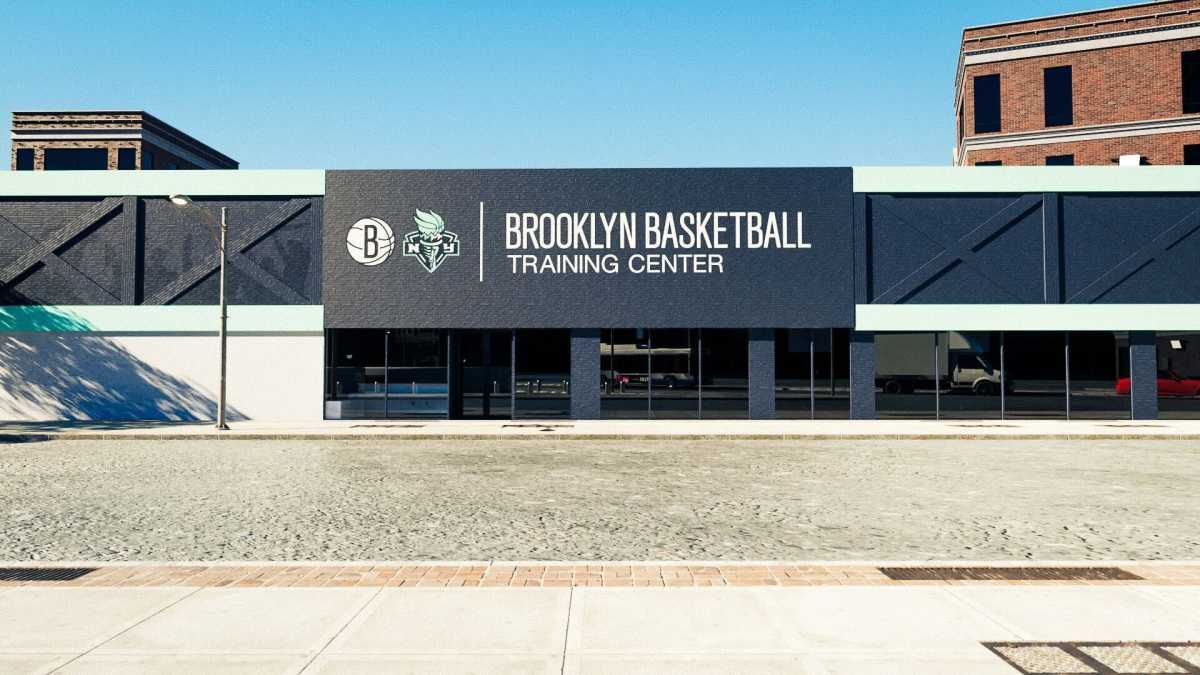
BSE Global, the parent company of the New York Liberty and the Brooklyn Nets, will open a youth basketball training facility this fall.
Image courtesy of BSE Global
BSE Global, the parent company of the Brooklyn Nets and New York Liberty, will open a multi-court youth basketball training facility on Flatbush Avenue near Barclays Center this fall.
The nearly 19,000-square-foot Brooklyn Basketball Training Center will be operated by BSE’s program Brooklyn Basketball, which offers basketball clinics, summer camps and community programs for local youth.
“We are excited to further enhance the area surrounding Barclays Center with our Brooklyn Basketball Training Center available to all, right in the heart of Brooklyn, as we continue to help grow the sport across the borough,” said Marissa Shorenstein, Chief External Affairs Officer at BSE Global, in a statement. “This initiative is about more than just basketball — it’s about creating a safe, inclusive space where young people can learn, grow, and connect – and by continuing to invest in our community programming, we’re building a stronger foundation for the future of the game and the neighborhoods we call home.”

The new facility will be outfitted with two full courts, a half-court “shooting lab,” auxiliary baskets, and “cutting edge technology” to help young players develop their skills. It will host all of Brooklyn Basketball’s existing programs — like after-school programs and daily basketball clinics — plus a new after-school program for kids ages 6-14, which will launch this fall, at the start of the new school year. Every Wednesday, that program will be dedicated to all-girls training.
The Training Center will also serve as a space for kids to do homework and care for other needs before and after training, and will have an area for parents.
“The Brooklyn Basketball Training Center is a game-changer, not just for basketball, but for the entire Brooklyn community,” said Sandy Brondello, Head Coach of the New York Liberty. “It’s about giving the next generation a space to learn the fundamentals, be inspired, and create a sense of community that basketball so brilliantly provides. We aim to build the future of the game and empower our community, especially young girls, to dream big. Who knows? Some of them might be playing across the street at Barclays Center for the New York Liberty one day.”
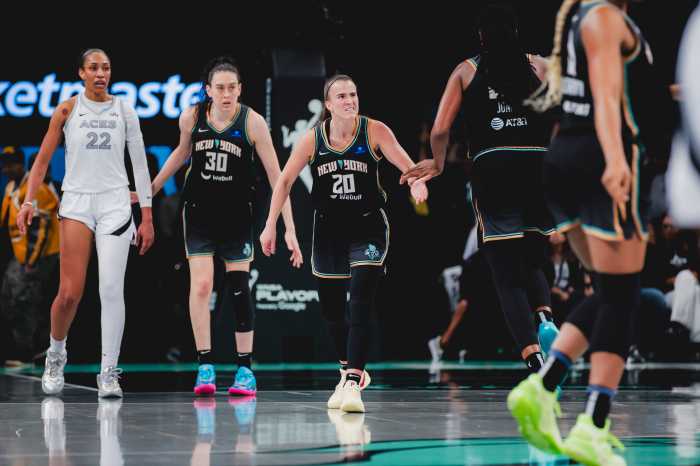
Brooklyn Basketball reaches around 40,000 kids each year, according to BSE, including hundreds at local schools where Brooklyn Basketball, in partnership with the Department of Education, hosts in-school basketball clinics. Earlier this year, the Liberty announced it will open a new player training center in Greenpoint in 2027, and will host some community clinics on the new courts there.
Registration for fall programs at The Brooklyn Basketball Training Center is now open, as is sign-up for the program’s summer camps and clinics.
A version of this story first appeared on Brooklyn Paper’s sister site New York Family.
Rec Sports
Trilby Park residents call for action against youth crime, lawmakers weigh in
State representatives Josh Williams (R-Sylvania Township) and Erika White (D-Springfield Township) met with community members Monday night. TOLEDO, Ohio — Residents in Toledo’s Trilby Park neighborhood said they’ve had enough of rising crime, particularly when it comes to youth. Mike Roby, who has led the neighborhood watch for the last three years, said the problem […]

State representatives Josh Williams (R-Sylvania Township) and Erika White (D-Springfield Township) met with community members Monday night.
TOLEDO, Ohio — Residents in Toledo’s Trilby Park neighborhood said they’ve had enough of rising crime, particularly when it comes to youth.
Mike Roby, who has led the neighborhood watch for the last three years, said the problem has grown more serious.
“Those group of kids have expanded. They’re older, they’re doing more things,” Roby said. “We need to do more outreach to the kids that are going to cause problems in the neighborhoods.”
According to Toledo police, 51 crimes were reported in the sector that includes Trilby in the last month alone. That includes 21 assaults, 10 thefts and eight reports of criminal damage.
Roby said he’s voiced his concerns to city council members, attorneys and police leaders. On Monday, those concerns reached the state level.
“They’re the ones that make the laws about the kids and say, ‘Hey, we need to do something about the troubled kids,’” Roby said.
State Reps. Josh Williams (R-Sylvania Township) and Erika White (D-Springfield Township) met with residents to hear their concerns and discuss possible solutions.
White said investing in a community center could help create safe spaces for families.
“It is where people come together to find health services, mental services, where children can play sports,” White said. “It allows the entire community to exhale, find some relief, or just come together. This community isn’t able to do that right now.”
Williams said he supports that approach, but also stressed the need to strengthen local law enforcement.
“Toledo has not been able to fill the police academy classes they’ve been looking for,” Williams said. “So we actually sat here in real time and drafted a request for legislation to encourage people to become officers, possibly through tuition reimbursement for those in criminal justice programs at our state institutions.”
Williams also said more funding for recreational programs, like sports, could give kids a healthier outlet and reduce the likelihood of crime.
White added that she plans to continue working across the aisle to find bipartisan solutions for neighborhoods like Trilby.
Rec Sports
‘Loud, obnoxious, rude:’ Unruly parents and uneven playing fields for coaches cause some to quit – InForum
Under the warm summer sun, hundreds of kids in brightly colored uniforms charged up and down soccer pitches in North Mankato on June 4 during Mankato United Soccer Club’s annual SoccerFest. On some of the fields of play, youth soccer teams from all over southern Minnesota competed against each other, while on other pitches, players […]
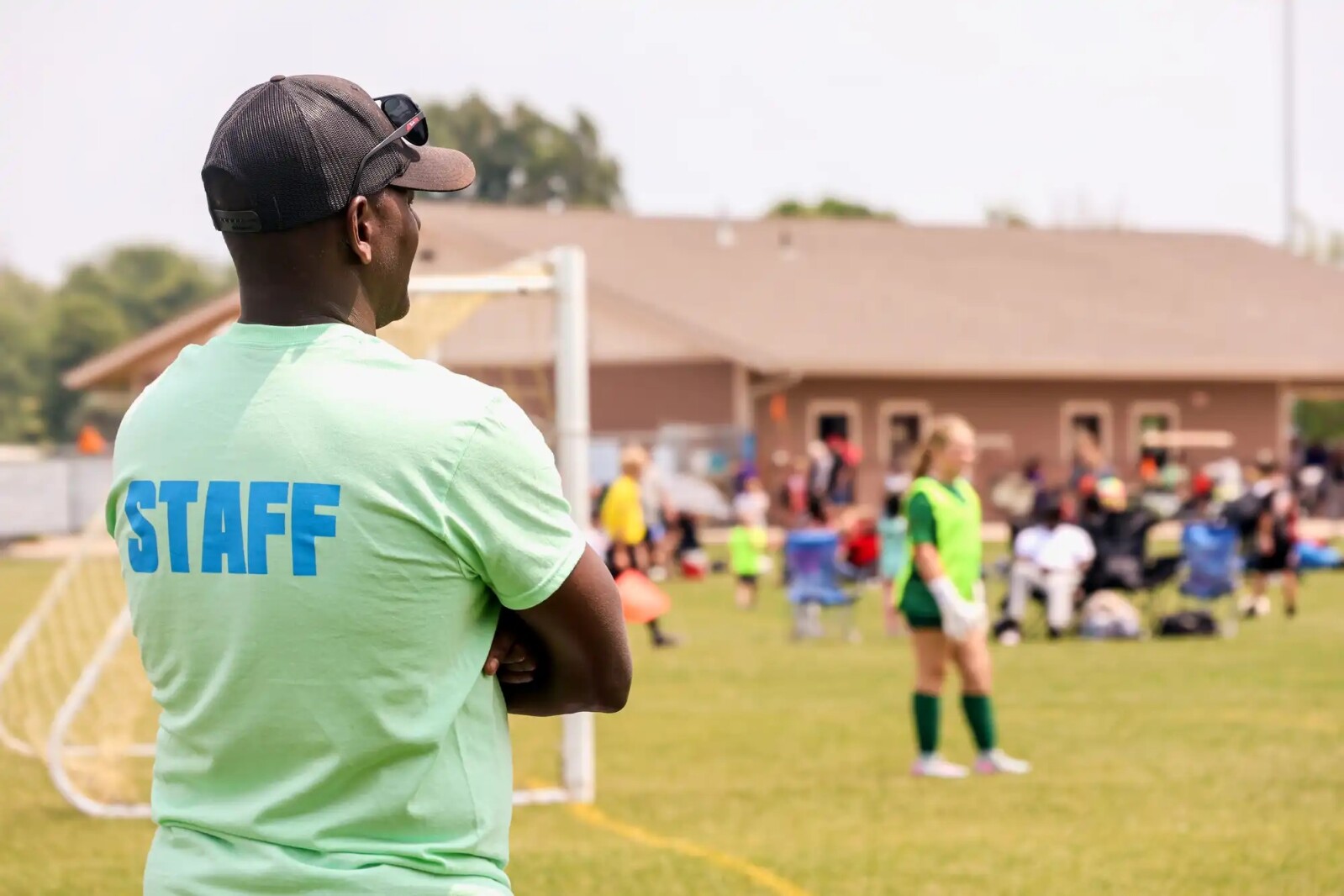
Under the warm summer sun, hundreds of kids in brightly colored uniforms charged up and down soccer pitches in North Mankato on June 4 during Mankato United Soccer Club’s annual SoccerFest.
On some of the fields of play, youth soccer teams from all over southern Minnesota competed against each other, while on other pitches, players engaged in practice drills kicking goals into the nets.
Officials’ whistles pierce the air as kids make their plays and coaches direct their teams, while the players’ biggest fans — their parents — cheer from the touchlines.
There’s a troubling trend within youth sports of coaches, referees and other game officials saying they’re facing more pressure, harsh criticism and conflict than ever before, and much of it is coming from parents.
It’s causing an increasing number of them to quit, as youth and high school sports clubs, teams, leagues say they’re having a more difficult time recruiting and retaining coaches.
A case in point — a successful and popular high school girls hockey coach in New Ulm recently announced he was quitting, and not because of the kids. He told the New Ulm Journal that he’d, “just grown tired of some of the parental behavior.”

Hannah Yang / MPR
Parental pressure and unruly behavior isn’t a new problem in youth sports, but some coaches believe it’s more visible in the age of social media where families can now stream sporting events and there’s easier ways to get involved. There’s potential for disputes to be dragged out onto online forums rather than handled in-person.
Rob Pipal, 69, is vice president of Mankato United Soccer’s Competitive League and he coached the sport for almost 50 years. When his daughter played for the club, Pipal admits he crossed the line himself — not as a coach, but as a parent.
“I was yelling at her at a game, I wasn’t coaching, but I was yelling from a parent’s perspective, yelling, ‘Hey do this. Hey, do that. You gotta do this!,’” Pipal said. “And then after the game, she said, ‘Dad, shut up. Let me play. If I want to know some information, you can tell me when we go home. But, don’t do that.’”
But, Pipal says it was a lesson learned and brought some perspective.
“I think some of that has gotten a little lost,” he said. “All the yelling really doesn’t fix anything. You just have to encourage and be very supportive and be very positive, and things go well for most kids.”
Other parents haven’t gotten the message. Coaches in every corner of the state and in many different sports say they’re getting an earful from parents complaining about their kids’ playing time, how practices are run, game strategies, and especially when their child athlete gets cut from a top team.
Northfield hockey coach Chris Walker, 44, says he’s seen and heard it all, including parents screaming and swearing at him and referees from the stands. During one away game this season, the other side noticed.
“Somebody was in the stands or something and heard these parents being loud, obnoxious, [and] rude,” Walker said. “And called someone in our association and said, ‘Hey, you know your parents on this team are out of hand.’”
Walker says he still loves coaching, but with some parents so focused on winning and making their kid a star player, he feels the things that should matter more, like skill development, team building and fair play, are getting lost in the shuffle.
“I want [kids] to have fun, and I want all of them to come back next year,” he said. “And then we have the parents watching the scoreboard, watching, and it just, I feel like it creates a mixed message.”
Some coaches who started in the 1990s say it’s harder now being a coach, and the expectations parents have for their kids are also different. Paul Clark, 50, an assistant varsity football coach in Pillager, said there are parents spending thousands of dollars on youth sports, training camps and competitive leagues.
“The type of athlete we have now compared to when I was in high school, I don’t know if I would be able to compete if I was in high school compared to these high school kids,” Clark said. “It brings that, ‘I spent all this money, and now I expect my kid to perform,’ and so it brings a challenge.”
These challenges, Clark said, and the long hours away from home, give coaches and officials little reason to stay, especially when they are paid so little, or not at all, as many coaches are volunteers. When they’ve had enough, many choose to quit, and Clark said that’s understandable if there’s not much support and respect within the school or organization to retain them.
“Nobody likes to get their reputation tarnished, no one likes to have people question them,” Clark said. “The pressures of having to spend time away from their own family, their own life to go to all these camps and be in the weight room for a couple hours a day and take time away from your summer, off-season, all that adds up.
Even those paid a stipend, “If you look at it per hour, it’s peanuts,” Clark told MPR News. “It ain’t worth it to them.”
Clark said he’s now found a balance after 27 years of coaching, and he focuses on the parents who do support him. It works for him.
“I try to remember that the vast majority, for every one parent that’s disgruntled, there’s probably 20 that are extremely supportive,” he said. “They want what’s best for their kid. They understand that there’s going to be some struggles. They understand that it’s not easy. If it was easy, everyone would be a star.”
With many of their members reporting frustration from these escalating pressures and conflicts, the Minnesota State High School Coaches Association is gathering data on coaching turnover to figure out what’s driving coaches to quit. Rick Ringeisen, executive director of the Minnesota State High School Coaches Association, said they hope the data paints a clearer picture.
“Coaches feel more pressure today than they ever had before, and they feel that it’s coming from lots of different directions,” Ringeisen said. “It’s from their players, it’s from the parents, it’s from the administration, and not all of them feel they’re being treated fairly.”
Once the results are released in a few weeks, Ringeisen says they plan to share the data with the Minnesota State High School League among other partners and sports groups.
“Parents, their primary interest is their child as it should be, which is exactly how we want it to be,” Ringeisen said. “Coaches, they have to look out for the entire team. And those two ideologies or feelings are not always harmonious with one another, and that can be difficult to navigate.”
It’s become such a big problem across the country that one of the opening seminar sessions at the upcoming National High School Athletic Coaches Association annual conference next weekend is “Dealing with Difficult Parents.”
Despite the negativity this past season, Northfield hockey coach Chris Walker says he still finds support from other parents who do appreciate him — and they’ve let him know that their kids do, too. It is in these moments that he finds joy in what he does.
A parent let him know that a pep talk Walker had with their child and inviting him to play goalie for a team of older kids made a huge difference. Walker said they won a game and tied the other.
“In a big, long text at the end of the year from a dad, he says, ‘I want you to know that you hit at just the right time to prove to him that he’s good and to make him still love hockey,’” Walker said. “It was probably one of the coolest messages I’ve ever gotten from a parent.”

Hannah Yang / MPR
Many youth sports organizations are being proactive, too. After losing two coaches because of parental behavior, Mankato United Soccer established a new code of conduct for this season. Everyone signed it: the kids, the coaches — and the parents, said Hisham Sorour, director of coaching. He says the goal is to set boundaries, protect and support the players and the coaches, and keep the games fun.
“You’re coming in to enjoy your son or your daughter,” Sorour said. “Enjoy [the game]. If you have a coaching point, let’s do it your way back home when you’re [on] a car ride.”
So far it seems to be working. Sorour says his coaches are telling him that this has been one of the most enjoyable and least stressful seasons in years.
This story was originally published on MPRNews.org.
____________________________________
This story was written by one of our partner news agencies. Forum Communications Company uses content from agencies such as Reuters, Kaiser Health News, Tribune News Service and others to provide a wider range of news to our readers. Learn more about the news services FCC uses here.
Rec Sports
Montana girls spur team to 1st title at USA Lacrosse Women’s National Tournament
MISSOULA — Lacrosse doesn’t yet have the youth sports foothold in Montana as it does on the East Coast, but a group of Montana girls is helping change the national perception of Treasure State athletes. “I’d never experienced playing at that level, I guess, because I’d never really gone that far out of Montana,” said […]
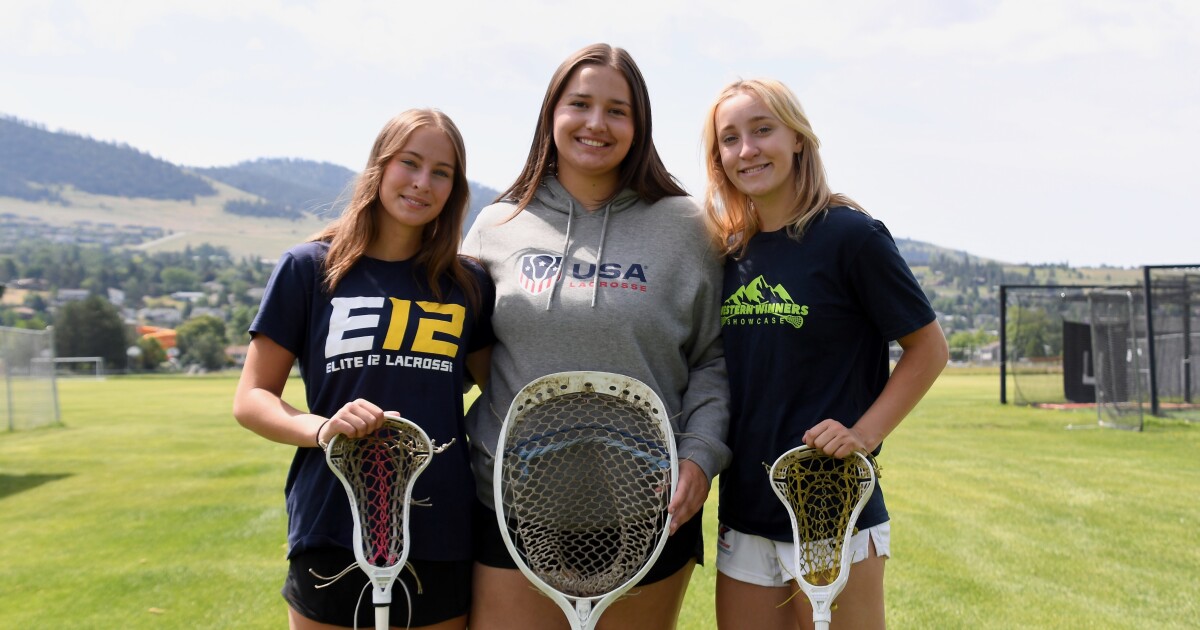
MISSOULA — Lacrosse doesn’t yet have the youth sports foothold in Montana as it does on the East Coast, but a group of Montana girls is helping change the national perception of Treasure State athletes.
“I’d never experienced playing at that level, I guess, because I’d never really gone that far out of Montana,” said Taelyn Hughes. “But being able to play against some of the best players in the country was pretty great.”
WATCH THE VIDEO:
Montana girls spur regional team to 1st division title at USA Lacrosse Women’s National Tournament
Hughes, a goaltender who just finished her junior year at Sentinel High School, and fellow Missoulians Morgan and Naya McKinney were part of a team made up of the best players from Montana, Idaho and Wyoming. They competed at the USA Lacrosse Women’s National Tournament in Massachusetts over Memorial Day Weekend and became the first team from the region to win its division.
“Everyone worked super well together, so it wasn’t too hard to get going,” said Naya McKinney, a midfielder who will be a junior at Sentinel in the fall. “It helped that we had a lot of team bonding beforehand and some practices. The other teams, you could tell that they underestimated us, but then we ended up crushing pretty much every team.”
“We just clicked instantly. Like, that was part of the reason why we did so well,” added Morgan McKinney, Naya’s twin sister and fellow midfielder. “I feel like we clicked so well and we had so much fun together, and we all wanted to be there and win.”
The girls’ chemistry and lacrosse IQ helped them not only win the tournament — but dominate. They outscored opponents 53-10 during pool play and then defeated Southern Ohio 12-6 in the championship game.
Kaitlyn Foster, from Billings, had a hat trick in the championship game and was named the Blue Division’s most outstanding player. Other Montanans on the team included Vanessa Nassar of Bozeman and Kalispell’s Tenley Petro, Brynnlea Toren, Casiann Clemons and Hannah Gray Petro.
“It was really intimidating starting off, but then as we started playing … it got together through all of us that we all worked together really well, so the stress kind of went away after that and it was just fun playing with everyone,” Hughes said.
“Winning at the end was just kind of crazy. You didn’t really understand what was going on until you finally won it,” Naya McKinney said. “And it just means a lot that we could represent Montana lacrosse like that.”
For the McKinney twins, it’s just the beginning of a busy summer that will see them head back east to play in more national tournaments. And both girls were also selected to participate in the Under Armour 150, a premier college recruiting combine held in Maryland that features the best players in the country.
“I was just super surprised (to be selected for the UA 150). We were the first girls Montana to make it,” said Morgan McKinney, who is hoping to be recovered from an ankle injury suffered while playing basketball in time to compete at the UA 150. “And I’m just super honored that we get to go there and show out.”
And have another opportunity to continue putting Montana lacrosse on the map.
Rec Sports
Roy West: Ripon youth sports coach sentenced for child sex crimes
SAN JOAQUIN COUNTY, Calif. — A Ripon youth sports coach was sentenced to prison for a multi-count child molestation case. It comes after he was convicted by a jury of more than a half-dozen child sex crimes. “Today’s sentencing restores a sense of safety for our community and honors the immense courage of the victims […]
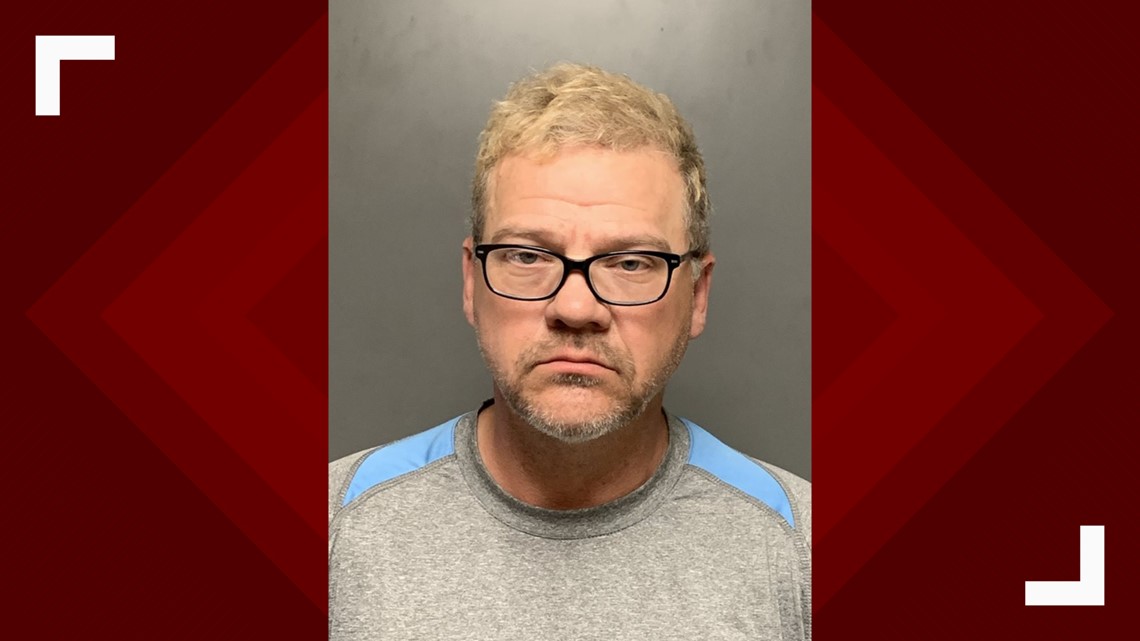
SAN JOAQUIN COUNTY, Calif. — A Ripon youth sports coach was sentenced to prison for a multi-count child molestation case.
It comes after he was convicted by a jury of more than a half-dozen child sex crimes.
“Today’s sentencing restores a sense of safety for our community and honors the immense courage of the victims who came forward,” said District Attorney Ron Freitas. “We stand with those harmed, fiercely committed to protecting our children and ensuring their voices lead to lasting justice.”
West was arrested in 2019 and accused of child pornography possession after officers served a search warrant on Van Dyen Way for a “wide range of lewd and lascivious acts with a minor.”
West was found in the garage of the home.
Rec Sports
Michigan Tech Coach and Shawano Alum Josh Buettner Hosts Youth Basketball Camp
SHAWANO, WI – Former Shawano Hawks standout and current Michigan Tech men’s basketball head coach Josh Buettner returned to his roots this week to lead a two-day youth basketball camp at Shawano Community High School. Hosted on June 17 and 18 inside the SCHS gymnasium, the Shawano Boys Hoops Camp welcomed Shawano School District […]

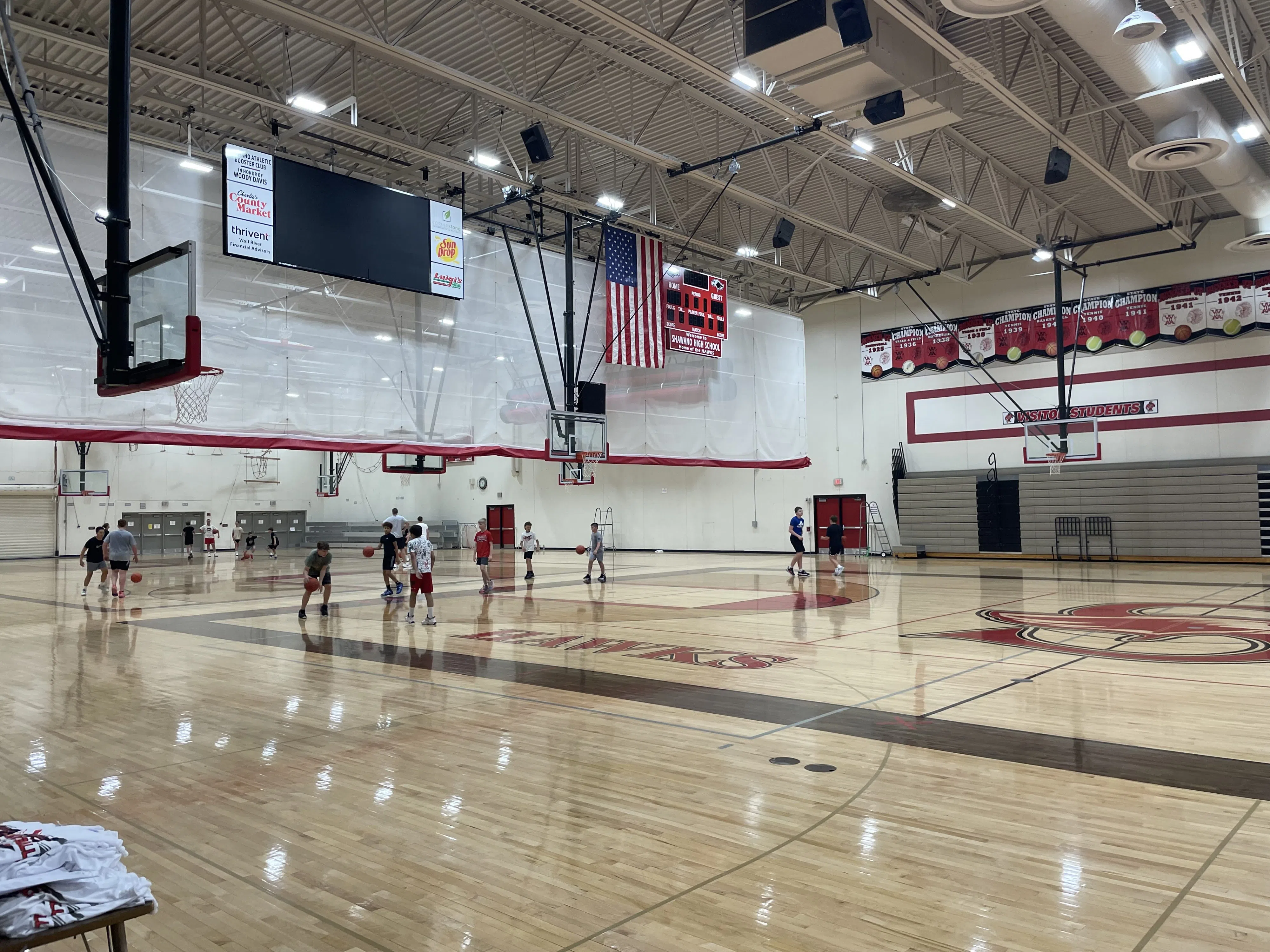
SHAWANO, WI – Former Shawano Hawks standout and current Michigan Tech men’s basketball head coach Josh Buettner returned to his roots this week to lead a two-day youth basketball camp at Shawano Community High School.
Hosted on June 17 and 18 inside the SCHS gymnasium, the Shawano Boys Hoops Camp welcomed Shawano School District boys entering grades 3 through 12. The camp offered three sessions based on grade levels: grades 6-8 from 10 a.m. to noon, grades 3-5 from 1 to 3 p.m., and grades 9-12 from 4 to 6 p.m. Each camper received a T-shirt, and the cost is $30 per participant.
Buettner, who played his high school basketball in Shawano before going on to a successful collegiate career and now a coaching role at the NCAA Division II level, said giving back to his hometown through basketball is something he takes pride in.
“It’s always good to be in the gym,” Buettner said. “Honestly, we’re just trying to run the camp and teach them skills. Just kind of the basics, and it’s things that kids of every level can do and things they can work on on their own.”
Buettner emphasized the accessibility of the game and the importance of self-driven improvement, even without top-level facilities.
“That’s kind of something that’s being lost in a lot of sports now. One of the great things about basketball is you don’t even need a hoop,” he said. “As long as you’ve got a ball, you can work on your dribbling in the garage or go to a park.”
Throughout the camp, players were introduced to skill-building drills and fundamentals meant to foster growth and fun, not just competition.
“We’re just trying to give them some skills and things they can work on their own to get better, and hopefully have a little bit of fun so that they fall in love with the game and continue from there,” Buettner said.
-

 College Sports2 weeks ago
College Sports2 weeks agoIU basketball recruiting
-

 Professional Sports2 weeks ago
Professional Sports2 weeks ago'I asked Anderson privately'… UFC legend retells secret sparring session between Jon Jones …
-

 Health2 weeks ago
Health2 weeks agoOregon track star wages legal battle against trans athlete policy after medal ceremony protest
-

 Professional Sports2 weeks ago
Professional Sports2 weeks agoUFC 316 star storms out of Media Day when asked about bitter feud with Rampage Jackson
-

 Rec Sports3 weeks ago
Rec Sports3 weeks agoScott Barker named to lead CCS basketball • SSentinel.com
-

 High School Sports2 weeks ago
High School Sports2 weeks agoParents Speak Out As Trans Pitcher Throws Shutout In MN State Quarterfinals
-

 High School Sports2 weeks ago
High School Sports2 weeks agoThe Arizona Daily Star's top high school athletes, coaches and moments of the 2024
-

 Rec Sports3 weeks ago
Rec Sports3 weeks agoJ.W. Craft: Investing in Community Through Sports
-

 Sports3 weeks ago
Sports3 weeks agoNotre Dame, Oregon highlight CSU volleyball opponents in 2025
-

 Rec Sports2 weeks ago
Rec Sports2 weeks ago2x NBA All-Star Reacts to Viral LeBron James Statement






























